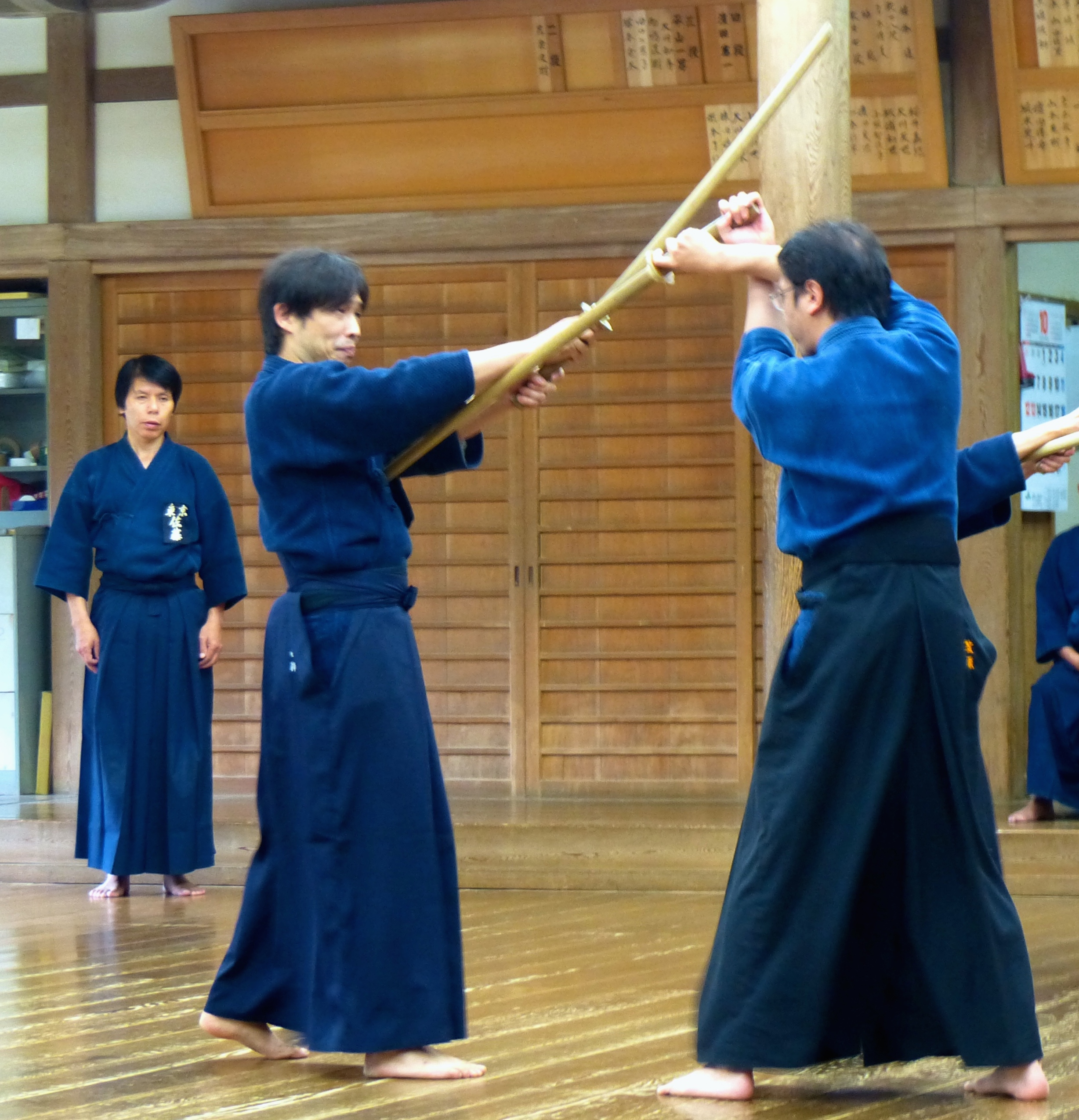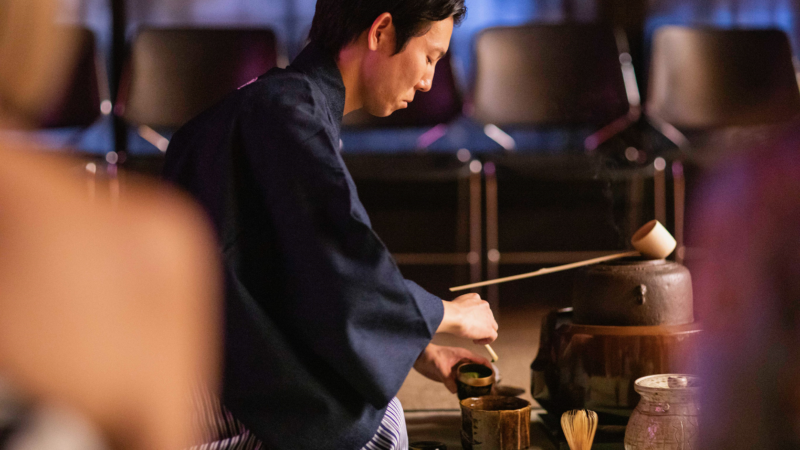Deborah Klens-Bigman, Ph.D. ◆ February 15, 2016

Traditional Japanese swordsmanship (iaido) consists solely of kata. As an art form that teaches people to draw and cut with a sword, as well as return it safely to its scabbard, solo practice is the safest way to learn, both for the student and the people around her. The different kata introduce theoretical situations – attacks from different angles, attacks by multiple opponents, and aggressive tactics for the swordsman should the need arise. By employing these theoretical scenarios, the iaidoka learns different techniques and timing.
Many traditional practices also include partner kata, called kumidachi (組太刀). Outside of safety issues (we would lose a lot of students if we allowed free sparring with swords, not to mention gain a lot of lawsuits), and unlike karate’s kumite, kumidachi is not sparring, but a carefully controlled exercise where the outcome is never in doubt. Kumidachi were traditionally reserved for high-ranking students. Unfortunately, in the modern era, so few people have achieved a high level of skill that some paired practices have been discarded or simply forgotten. Recently, an effort has been made to reclaim kumidachi in some styles before the forms are gone forever.
I was fortunate in that my teacher, Otani sensei, created 20 kumidachi forms for us to practice. While the forms were influenced by several styles, they are unique to our particular practice. Unlike some of the traditional styles, these original kumidachi can be practiced by anyone, at any level (though they increase in difficulty as one goes through the whole set). The first five or so are even suitable for careful practice by beginning students, and I tend to introduce them early in their training.
There are several good reasons to have students practice kumidachi. In addition to several important principles that apply to combat and swordsmanship, which I will discuss in the next post, there are some simple, practical aspects. For example:
Kumidachi practice gives students an actual target. Many times, iaidoka practice their solo kata with little understanding of where the target is. In kumidachi, of course, the target is right there. Practicing with a partner ideally imparts a sense of realism that can be carried back into solo iai practice.
We don’t have to look very far in popular journalism to find articles that discuss people’s vanishingly small attention span, given our multitasking jobs and the constant distraction of our electronic tethers. I can guarantee one cure: someone coming at you (however slowly) with a wooden sword aimed at your head. Kumidachi practice is a unique way to help students pay attention to the “here and now.”
Of course, we are not actually bopping our opponents on the head, wrist, torso or other targets that are presented in kumidachi practice. Though someone occasionally gets touched, the idea is to control the strike short of the target. In order to do this, we employ a technique called shibori, literally to wring out the tsuka (grip) of the sword at the end of the cut. In target cutting a type of shibori is used to power the cut through the target; but in kumidachi, shibori is used to end the cut short of the intended target. While I often worry about beginner students understanding this concept when starting kumidachi, generally, I have found beginners surprisingly adept at shibori when they have a living target. Again, this is a technique that transmits directly into solo practice.
Which brings us to the last practical aspect; or, rather, two related concepts that are important in any martial arts class: a sense of bravery and a sense of trust. It takes a certain amount of nerve to face someone and allow that person to attack you. Moreover, you have to trust your partner that if you mess up your part, she will stop short of somehow making you pay for your error. While, as I said, someone occasionally gets touched, there is no malicious intent in kumidachi, or any other partner kata. And isn’t that how a dojo is supposed to work?




